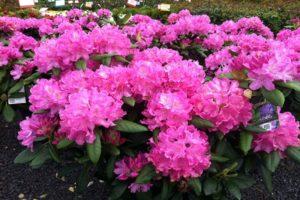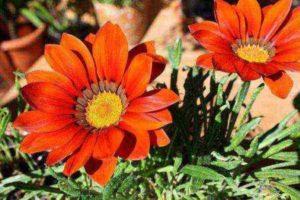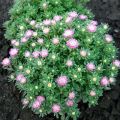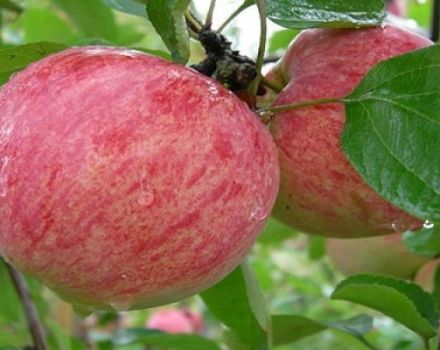Description of varieties and types of anemones, planting and care in the open field
Anemone (anemone) - herbal perennial, flower of the buttercup family. The genus has about 170 wild and ornamental species. Agrotechnology for breeding anemone in garden plots has general requirements and characteristic species differences. Growing and caring for anemones in the open field depends on the growing season, the device of the root system of flowering plants.
Description and characteristics
Garden culture, pleasing to the eye with a multitude of graceful flowers, both in spring and against the background of wilting nature, is very popular with gardeners.
Anemones have fleshy cylindrical or tuberous roots. The height of the peduncles is from 5 to 120 centimeters. Leaves are palmate or split. Seeds of all types of anemone are small, of various shapes. The roots, stems, flowers of the plant are poisonous.
Flowers are:
- solitary and in inflorescences;
- terry and simple;
- small and large.
Petals (from 5 to 20 pieces) can have colors:
- white;
- blue;
- green;
- yellow;
- pink-red;
- purple;
- two-tone.
In terms of flowering, spring varieties (ephemeroids) and autumn-summer varieties are distinguished. The advantages of the ephemeroid are the graceful and varied color configuration. The color overflow of the petals is dominated by pastel shades.

Lack of spring anemones: fast flowering. The awakening of the anemone begins in April. All the buds bloom in May. Flowers dry up by the end of June. Autumn varieties are tall, brightly colored. Flowering lasts up to 3-5 months, in some with an intermittent cycle: in the summer season and autumn months.
Features:
Despite the varietal and species diversity of anemone, the cultivation of flowers requires compliance with mandatory conditions.
General principles of agricultural technology:
- Mandatory watering in dry, hot weather.
- Drainage of soil from stagnant groundwater.
- Moderate hydration.
- Good illumination without strong sun exposure.
- Autumn top dressing with full mineral fertilizers before preparing for wintering.
- Introducing humus into the soil before placing the anemone.
- Feeding flowering anemones with organic fertilizer.
- Mulching the ground to protect it from drying out and frost.
Reproduction of plants is possible by seeds, tubers, root suckers.

Popular species and varieties
Among the ornamental varieties, there are the most popular ones due to the combination of such qualities as unpretentiousness, flowering period, original color.
Forest / oak
The wild anemone is an endangered species, rarely found in natural conditions. Grown in personal plots. Refers to ephemeroids, flowering time: April-May.
The variety grows in mid-latitudes, is not picky about soil and lighting. The bush rises to 20-30 centimeters. The diameter of simple flowers is 2-4 centimeters. The rhizome is branched, fragile. Coloring of petals: white-lilac-blue-pink. Terry varieties are bred.

Crowned (anemone)
Anemones of the autumn-summer period of flowering, have a powerful root system, stem height - up to 80-100 centimeters. On one peduncle, up to a dozen simple or semi-double flowers of different colors bloom. It has several dozen popular varieties. The most heat-loving and capricious to care for.
Japanese (autumn)
Japanese anemone is one of the varieties of Hubei. Flowers bloom twice: in summer and autumn. The color of the petals ranges from snow-white to purple, in the shape of the cup - from simple to double.
Popular varieties of Japanese anemone:
- Pamina - with large bright pink double flowers on a peduncle up to 80 centimeters, shade-loving;
- Hadspen Abundance - tall flower with cream colored petals;
- Prince Henry - up to 85 centimeters high, with semi-double dark pink flowers.
The plant is used not only in landscape design, but also when decorating bouquets.
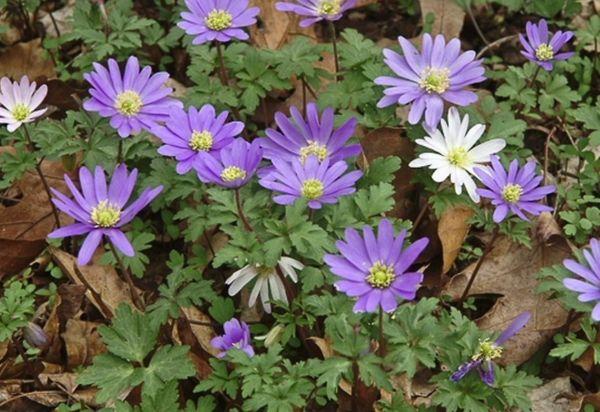
Tender (Blanda)
The plant grows from 5 to 10 centimeters on soils of moderate moisture, in a well-lit area, without direct sunlight.
The most popular varieties are:
- Blue tint;
- Charming (pink);
- White splendor.
Small plants are widely used in creating a colored cover in garden plots.
Buttercup / buttercup
Plants are undemanding to soil and lighting. They grow well under the shelter of trees, houses, shrubs that protect from the sun and wind. The height of the bush is 20-25 centimeters. The flowers are simple or double, bright yellow, small in size. The root is elongated, with numerous processes.
Hybrid
English variety. The result of crossing Japanese and grape anemone. The varieties of the resulting hybrid are tall, short, double, semi-double, simple.
Popular varieties of autumn-summer anemones:
- Honorine Jobert - with white and pink flowers;
- Profusion - with burgundy semi-double flowers;
- Queen Charlotte - with pink semi-double petals.
Plants are not cold hardy. When grown in Central Russia, they require shelter.
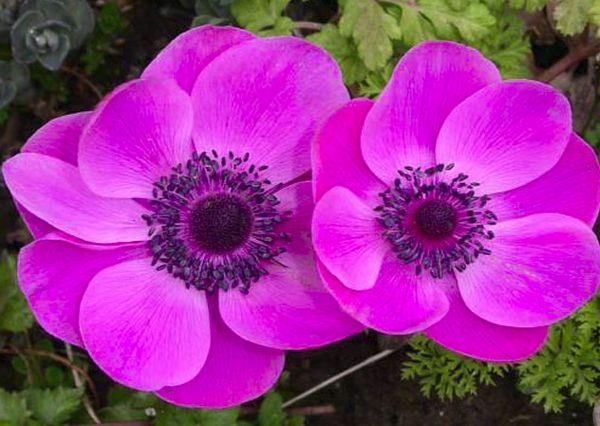
Hubei
The cultivar is closely related to the Japanese anemone. Until 1910, the plant growing wild in the Chinese province of Hubei was officially called the Hubei anemone, at the household level - Japanese. The names of the anemone varieties have a dual meaning: Japanese / Hubei.
Felted
Autumn anemone. Frost-resistant, unpretentious variety. Recommended for breeding in northern regions with short summers. On tall, strong peduncles, buds open in the second half of August to the end of September. In the lower part of the stem grow thick three-lobed leaves, covered on the inside with a light fluff (“felt”).
Popular varieties:
- Robustissima - with bright pink flowers on stems up to 120 centimeters;
- Albadura - with large, up to 6 centimeters in diameter, pale pink buds;
- Septemberglyants - with pink flowers, peduncles up to 120 centimeters high, light-loving.
Group planting of felt anemone serves as a good decorative element along the banks of artificial and natural reservoirs.
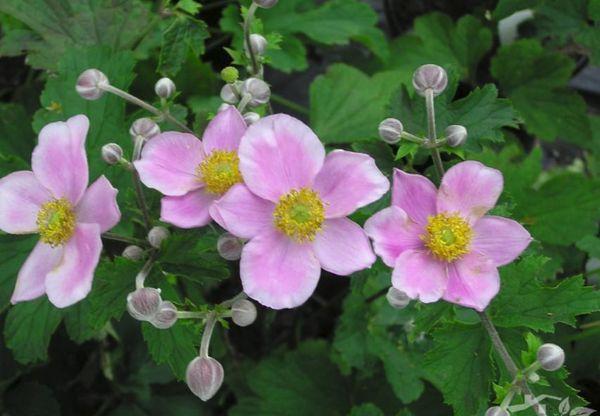
Lieutenant general
Varietal affiliation - crown anemone.
Ground part of the plant:
- root leafy rosette;
- from 3 to 20 stems, 10-40 centimeters high;
- 1 flower per stem.
Petal color:
- white;
- pink;
- red;
- spotted;
- bicolor.
Keeps flowering from June to October.
Canadian
It is found in the wild. Does not require shelter at temperatures down to -15 degrees. To maintain decorative properties, moderate watering and partial shade are required. The stem height is from 20 to 80 centimeters. Flowers are snow-white, solitary or in inflorescences, appear from June to July.

Bridget
A kind of crown anemone. Heat-loving. It is constantly grown in the ground in the southern regions of Russia, in the rest it is required to store the tubers dug up. Blooms in May in large, bright buds; blooms until mid-July.
Admiral
A perennial of crown anemones, with double pink buds up to 8 centimeters in diameter.
Lesser
A hybrid of forest and multipartite anemone. The flowers are pink, the stem is up to 35 centimeters. Frost resistant.
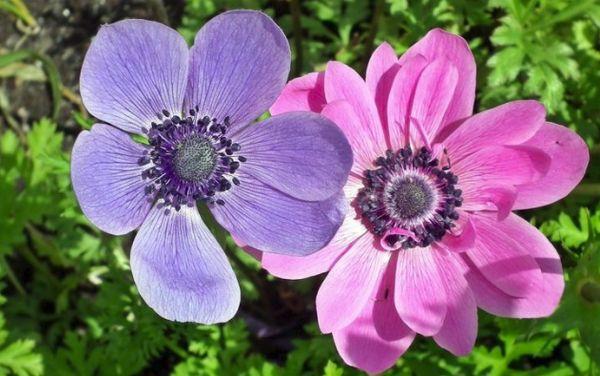
Crowned De Caen mix
Perennial plant with a long stem, well-developed root system. It blooms twice: in early August and late September. The flowers are simple, solitary, of various colors. On peduncles there are up to 7-8 flowers.
Growing
Before you start cultivating anemones, you must:
- choose a site;
- prepare the ground;
- decide on the planting material.
Flowers are planted with tubers, root shoots, seeds. Seedlings are grown from them, which then move into the ground. Plants grown from seeds bloom for 3 years. The most convenient way of breeding is from tubers. Anemone roots are fragile, easily damaged when removed from the ground and when planting.
Landing dates
Seedling preparation begins at the end of April.
How to soak tubers
To remove tubers from dormancy, several methods are used:
- Soaked for 12 hours in warm water, then placed in a 0.04% fungicide solution for 30 minutes.
- Treat with heated water for 30 minutes:
- sprouted tubers at 40 degrees;
- dry - at 50 degrees.
- Wrapping with a cloth impregnated with growth stimulants, for example, Epin.
The latter method is recommended to avoid excessive waterlogging and rotting of tubers.

Planting capacity and soil
For seedlings, pots and a substrate of sand, humus, peat are prepared.
Landing
When planting tubers, it is advisable to determine the growth points. Tubercles (buds) will be visible on the swollen tubers. You can plant the whole tuber or parts of it. Each segment should have one or more buds.
The tuber or part of it is placed bud side up. If it is impossible to determine the peephole, the tubers or segment are placed on their side. Placing down bud will not germinate. Depth of placement in a pot - 5 centimeters.
Seedling care
The soil layer in the planting containers must be kept moist.
Temperature
Heating the room where the seedlings are located depends on the stage of their growth:
- + 13 ... + 14 - before germination;
- + 3… + 4 - until 2 leaves appear;
- + 10 ... + 13 - before landing in open ground.
Illumination
The flower seedlings should not be exposed to direct sunlight. The soft diffused light is sufficient to prevent the stretching of the shoots.
Landing on open ground
The formed anemones bush are planted, with the onset of stable warm weather, in the prepared soil.

Timing
The specific time for planting flowers depends on which spring is early or late. It could be April or early May.
Seat selection
The plot for growing anemone must have the following characteristics:
- not sandwiched between other plants;
- sheltered from the wind;
- from direct solar radiation;
- without planting crops with powerful roots in the upper soil layers;
- no trees with a dense crown.
To prevent stagnation of groundwater, a small hill with drained soil is optimal.
Soil preparation
The soil for flowers should have a loose structure, neutral acidity. Optimal composition: deciduous-peat humus or loam. 2-3 months before planting flowers, the soil is dug to the depth of a bayonet shovel and manure (6 kilograms per 1 square meter), potash (45 grams) and phosphorus fertilizers (60 grams) are applied.
For 2 weeks, the soil is mixed again, nitrogen fertilizers are applied (45 grams). The addition of sand, dolomite dust and wood ash improves aeration and reduces acidity. In lowered areas, with the possibility of water stagnation, the land is raised by 20 centimeters. Soil preparation is completed a few days before planting the anemone.
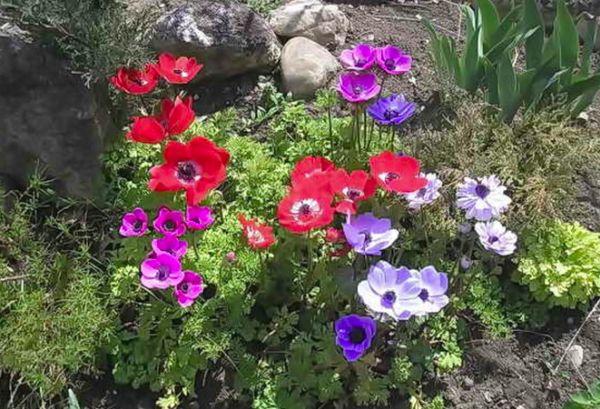
Landing scheme
Anemones tubers are planted in a square-nesting way, 20 by 20. For each nodule, a planting hole is prepared - up to 10 centimeters and 8 centimeters deep. An ash-humus mixture (200 grams) is poured onto the bottom. The tuber is laid, taking into account the position of the eye, sprinkled with earth and slightly compacted.
Watering and mulching
Moderate watering follows after planting. With the appearance of buds and until the end of flowering, the volume of water increases. Plant moisture depends on the composition of the soil: the higher the aeration, the more watering, but not more than 30 liters per square meter. To protect the soil from drying out, use a layer of mulch.
Care
The main condition for the growth of anemones is the observance of soil moisture at the required level. With a lack of moisture during the budding period, the flowers will be small, forming in small quantities. Waterlogging will cause the death of the plant. This requirement is easy to fulfill if you follow certain rules.
Control over soil moisture
Watering the flowers is carried out early in the morning and at dusk, at sunset. In the first two months, the soil is moistened once a week. On summer days, anemones are watered depending on the amount of precipitation: in dry and hot weather - twice (morning and evening); during frequent precipitation - not required.
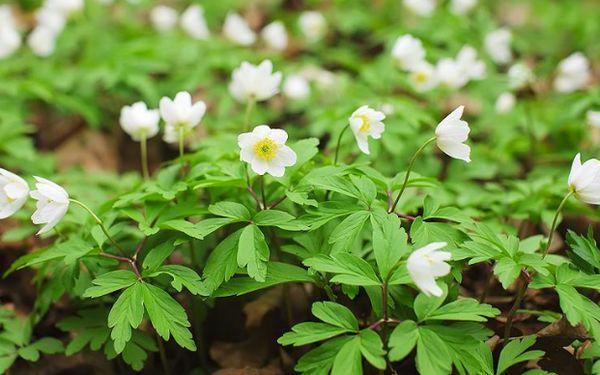
Top dressing
The need for fertilization depends on the quality of the soil composition. Anemones do not need abundant feeding if fertilization was made during the preparation of the site. In subsequent years, the flowers are supported with organic matter (diluted with rotted manure) during flowering, in autumn - with complex fertilizers.
Weeding and loosening
Regular removal of weeds and loosening is a must in the care of anemones. Deep loosening is excluded: to avoid root damage. Weeds are pulled out manually, with the destruction of the soil crust no more than 1 centimeter thick.
Mulching
Covering the soil with mown grass, straw, especially on hot days, will protect the root system of plants from drying out. The mulch layer should be up to 5 centimeters.
Features of planting and caring for Tender anemone
Blanda is one of the most beloved anemone varieties. In order for the quivering flowers to decorate the garden plot, they adhere to the established order of planting and care.
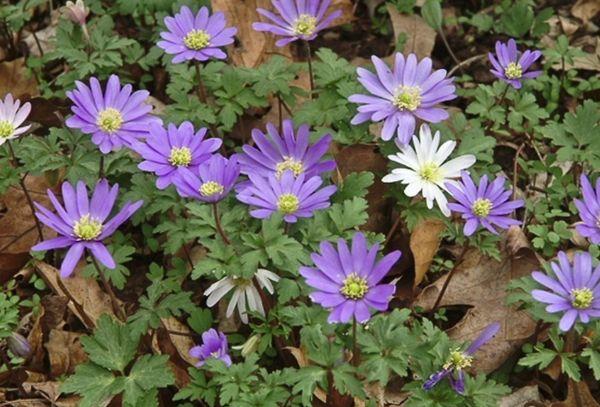
Timing
You can plant an anemone in springtime, as the snow melts, and in mid-autumn.
Tuber preparation
In early spring planting, the tubers of flowers are soaked for 2-3 hours in warm water. Then covered with sand and watered with a weak solution of manganese. After 2-3 days, buds of growth appear, after which the tubers are moved into open ground, with their eyes upward.
Landing scheme
30 anemones tubers are planted per 1 square meter according to the scheme: 20x15. Depth - 4 centimeters.
We grow from seeds
In the anemone, the germination rate of fresh seeds does not exceed 25%, which is explained by the immaturity of the embryo of a perennial culture. To improve germination, stratification is used: prolonged moistening at low temperatures in aerated soil.The created conditions provide maturation and exit from physiological dormancy.
Flower seeds are mixed with peat or coarse sand in a ratio of 1 to 3, moistened and placed in a cool place. It is necessary to maintain constant humidity. After the seeds have swollen, crushed peat is added to a ratio of 1 to 2, sprayed with water and kept at a temperature of no higher than 5 degrees, until the sprouts hatch.
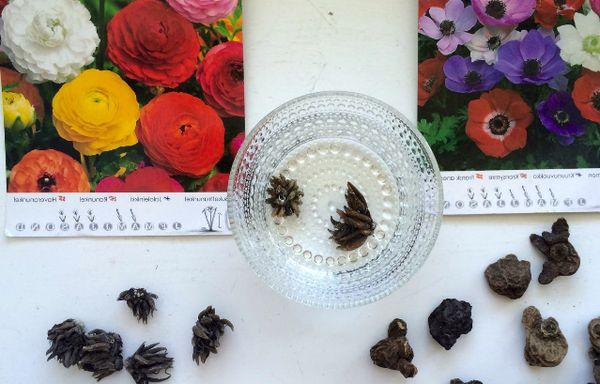
A container with seedlings, in the absence of snow, is buried in the ground, in the presence of snow cover - in snow. Cover with spruce branches and sawdust until spring. In March, the seeds are transplanted into pots for germination. Seedlings with 2 leaves are planted in open ground in compliance with the rules of agricultural technology for anemones.
Another method of stratification is in the autumn laying of seeds in boxes with loose soil and further burying them in the ground with thermal insulation. In the spring, the seed is removed and planted for further growth in a box.
Reproduction
You can plant an anemone in 4 ways:
- seeds;
- tubers;
- dividing the rhizome;
- bush.
The choice depends on the variety, plant maturity, growing region.
Seed
Flower seeds can be sown in open ground at the end of the growing season: October-November. In cold regions, seedlings are grown from seeds. Sowing is carried out at the end of January - in boxes filled with peat-sandy substrate. The depth of placement in the grooves is 1 centimeter.
The soil mixture is regularly moistened. The temperature before germination is not higher than 13 degrees. With sprouts pecking, it drops to 4 degrees. With the appearance of 2-3 leaves, the anemones dive, seated in separate pots and kept until disembarking in the ground at 10 degrees.
Vegetative
When breeding anemones with seeds, there is a risk of getting offspring with a limited number of maternal traits. You can plant anemone with long rhizomes when the snow completely melts, or in October. In the spring, the roots are dug up, kept for some time in heated water. The next procedure is dividing into pieces of 5 centimeters, with an eye on each.
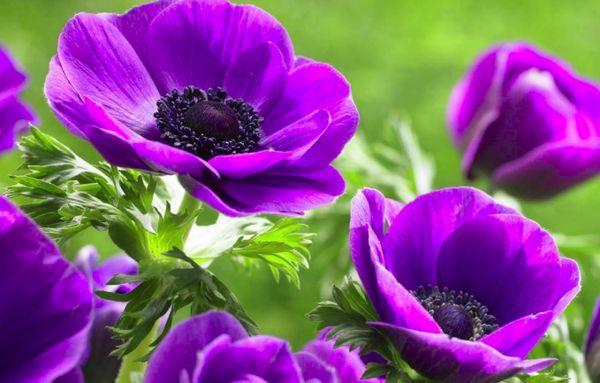
Parts of the root are placed horizontally, in soft soil, to a depth of up to 5 centimeters, sprinkled with earth and moistened. The plant will come into full force in 3 years. When propagating in autumn, parts of the root are not soaked, they are deepened into the ground up to 10 centimeters.
Plants that have reached 4-5 years old are planted by dividing the bush. The flower is dug out of the ground without removing the ground part. Divide the bush by the number of stems and place it in prepared planting holes. Sprinkle with soil and moisten.
When dividing the tuber, 2-3 equivalent parts are obtained.
Features of care in the winter
In regions where the air temperature can drop to 30 degrees or more, anemones should be dug out of the ground and prepared for storage until spring. With the onset of frost, the plants are removed from the soil and left to dry. Then the ground part and the ends of the roots are cut off from the tubers, protecting the growth buds.
The tubers are placed in a container with dry sand or peat, covered with a layer of 5-7 centimeters. Storage during winter months - in a dark, dry place at temperatures up to +10 degrees. In the southern regions, during warm winters, anemones are left in place of growth, covered with a 20-centimeter layer of fallen leaves and spruce branches.
Use in landscape design
Glades of anemones, selected according to varieties, for flowering from April to October, serve as a decoration of the personal plot. In landscape design, flowers are planted on alpine hills, next to a low-growing shrub, in the form of a flower bed on a lawn.
Answers on questions
Question: Is it possible to grow crown anemone in the Middle Urals without digging it up for the winter?
Answer: You can, if you cover it carefully. But there is a high probability of getting wet and rotting of the roots during early thaws.
Question: What if the fallen leaves for the shelter of the anemone serve for the wintering of garden pests?
Answer: In this case, you will have to either dig up the tubers, or cover them with spruce branches.
Reviews
Karina, Rostov
“There are magnificent, amazing flowers, and anemones, especially spring anemones, are cute. It is simply impossible to walk past them and not pay attention. "
Olga, Moscow
“I love crown anemones very much. Indeed, these are princesses among flowers. Fragile, touching and beautiful. "
